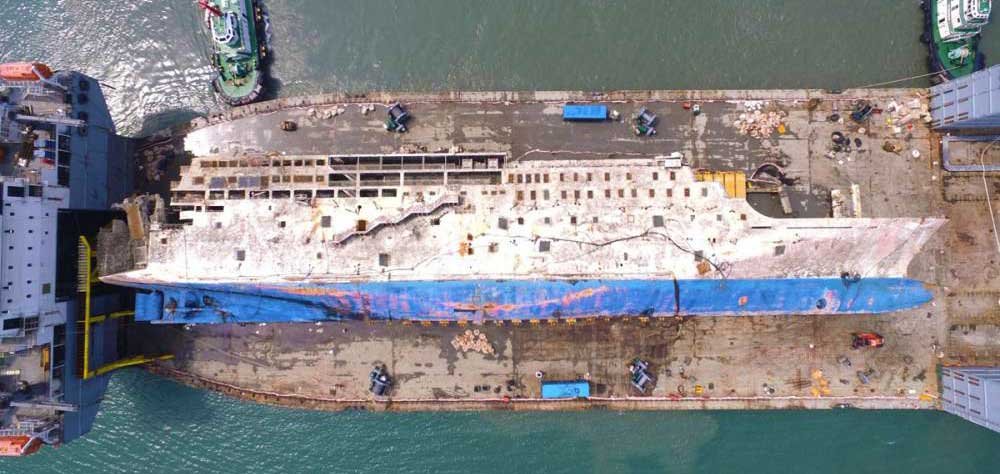What is the purpose of tugboats?
07/30/2025Types of ports and what marine fenders are suitable for them
07/31/2025What are the air bags for salvage boats?
Salvage boat air bags—also called marine salvage airbags—are rugged, cylindrical inflatable devices built from high-strength rubber reinforced with multiple synthetic tire‑cord layers. When placed under or alongside a sinking or stranded vessel and inflated with air, these airbags generate buoyancy that can lift or float the boat to the surface for recovery, refloating, or movement.

Why This Issue Is Necessary and Urgent
To begin with, in real-life salvage operations—such as emergency rescues of beached or sunken boats—time is absolutely critical. Delays can lead to further damage, environmental risks, or even total loss of the vessel. That’s why having fast, effective tools like salvage airbags is essential.
Traditional lifting methods using cranes or tugs often take too long to mobilize. Moreover, they may not even work in remote areas or shallow waters. In contrast, salvage airbags are compact, portable, and can be deployed quickly on-site.
For example, NANHAI once responded to a stranding in a narrow, muddy estuary. Instead of waiting days for a heavy crane barge, the team used airbags to lift and refloat the vessel within hours—saving time, money, and resources.
Therefore, understanding how these airbags work and why they matter can make all the difference in a successful marine recovery. If you’re part of a salvage crew, a port operator, or a shipowner, having the right tools lets you act fast when emergencies strike.
How Marine Salvage Airbags Work
Airbags function like large life‑preservers placed beneath the hull. As they inflate, their buoyant force raises the vessel. They can be used vertically to upright sunken boats, or horizontally like pontoons for shallow‑water lifts. Once the vessel reaches near the surface, crews can pump out internal water and refloat safely.
Key Features & Benefits of Salvage Airbags
Highest strength rubber with synthetic‑cord reinforcement – layered for abrasion resistance and durability far beyond PVC lift bags.
Cylindrical enclosed design with cone ends, lifting straps, shackles, and optional safety valves to prevent over‑inflation at depth.
Pressure‑rated for deep water – working under pressures up to ~0.25 MPa (around 25 m depth), making them suitable for deep salvage operations.
Buoyancy capacity ranges widely – from just a few tonnes for small boats to over 100 t for larger, longer airbags. Standard sizes from 0.8 m diameter up to 3 m and lengths up to 25 m offer 1 t to 177 t lift capacity.
Featured Snippets
What are salvage airbags?
Salvage airbags, or marine salvage airbags, are enclosed inflatable rubber tubes reinforced with tire‑cord layers. When inflated under or beside a sunken or stranded vessel, they produce buoyancy to lift, right, and refloat the vessel.
Why use marine salvage airbags?
They provide fast, portable, and adaptable buoyancy—ideal for emergency refloating, shallow‑water rescue, pipeline laying support, and dock or bridge construction, without heavy machinery.
How much weight can a salvage airbag lift?
Buoyancy capacity varies by diameter and length: typical sizes lift between 1 t and over 150 t, with small units for light boats and large units for heavy marine salvage tasks.
FAQ
What materials are salvage airbags made of?
Marine salvage airbags use multi‑layered rubber with synthetic tire‑cord reinforcement, not PVC.
How are airbags attached to a boat?
They are lowered under or along the hull and secured with lifting straps and shackles, usually at least a 6:1 safety margin.
Are salvage airbags safe at depth?
Yes—most come with auto pressure‑release valves to prevent over‑inflation and can function safely up to ~25 m depth.
What is the difference between salvage airbags and PVC lift bags?
Salvage airbags are stronger, more abrasion‑resistant, and built for deeper, heavier duty use. PVC lift bags are lighter but less durable.
With NANHAI’s marine salvage airbags, you can salvage faster, with greater control, and at lower cost. Interested in deployment strategies or model recommendations? Let me know—I can walk you through real project case studies and size selection.
